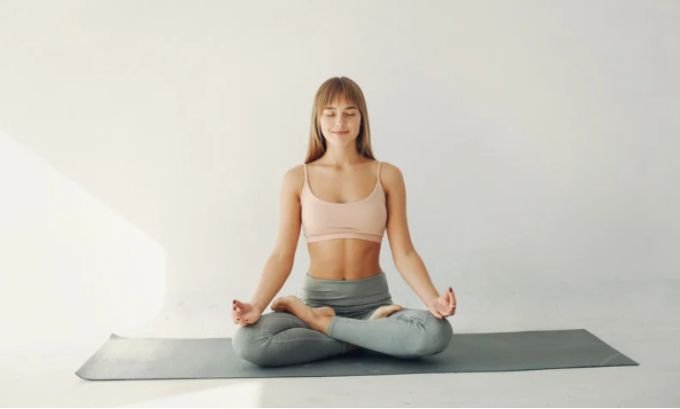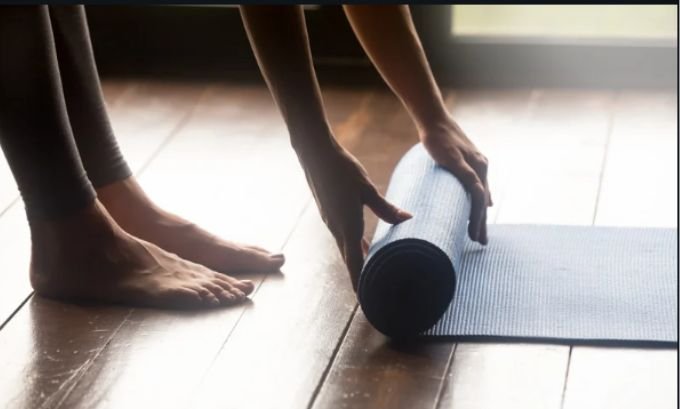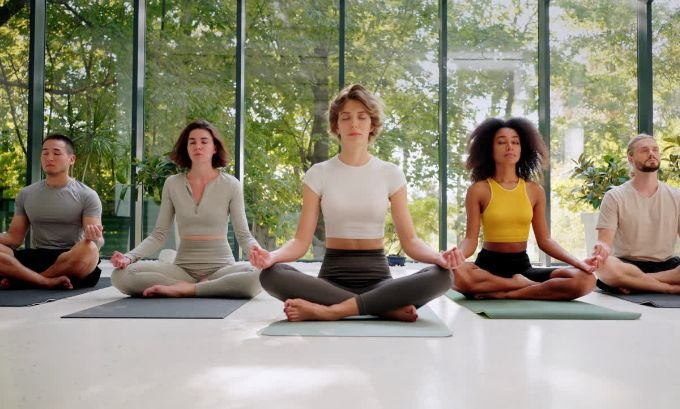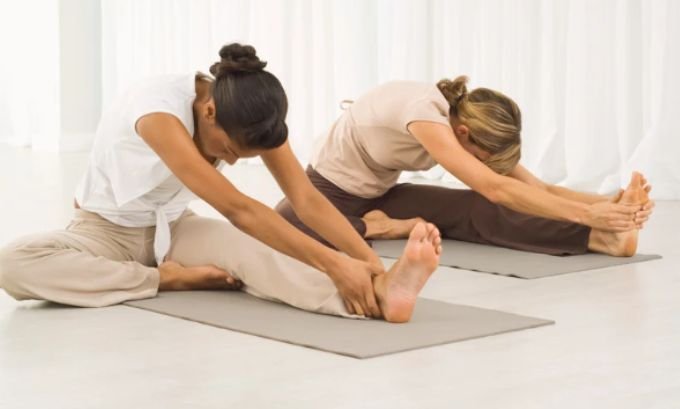Yoga is a powerful practice that unites the mind, body, and spirit through movement, breath, and mindfulness. It’s an ancient system for holistic well-being that has evolved over thousands of years. If you’re looking to understand this discipline on a deeper level, here is everything you need to know about yoga to feel informed and inspired.
This guide is designed to be your go-to resource, whether you’re a complete beginner or simply curious. We’ll explore yoga’s origins, its core principles, the science behind its benefits, and how you can start your own journey on the mat.
Table of Contents
Demystifying Yoga: A Modern Guide to an Ancient Practice
At its heart, yoga is a practice of connection. The word itself comes from the Sanskrit root “yuj,” which translates to “unite” or “yoke.” The ultimate aim is to create a harmonious union between your physical body, your mind, and your inner spirit. This is achieved through three main pillars: physical postures (asana), breath control techniques (pranayama), and the practice of meditation (dhyana).
While yoga is widely recognized in the West as a form of physical fitness, its traditional purpose is far more expansive. It’s a complete system for living a more balanced, conscious, and healthy life. Today, it is practiced by an estimated 300 million people worldwide for reasons ranging from stress reduction and physical conditioning to spiritual exploration.

Tracing Yoga’s Ancient Footprints: From Scripture to Sage
The story of yoga is a long and fascinating one, with its earliest philosophical roots stretching back more than 5,000 years. The first whispers of its concepts can be found in the Rigveda, a collection of sacred hymns and one of the oldest texts in Hinduism. These ancient scriptures explored ideas about consciousness and discipline that laid the foundation for what yoga would become.
However, the practice was formally structured much later. Around the 2nd century CE, a revered sage named Patanjali compiled the Yoga Sutras, a seminal text composed of 196 short aphorisms. This work masterfully outlines the “eight limbs of yoga,” providing a comprehensive roadmap for practitioners. This framework moves beyond physical postures to encompass ethical conduct, self-discipline, and deep states of meditation.
For centuries, yoga was a spiritual discipline taught directly from guru to student in India. It wasn’t until the late 19th and early 20th centuries, when influential teachers like Swami Vivekananda brought yogic philosophy to the West, that it began to capture global attention, initially as a path to spiritual wisdom and later as a popular system for health and wellness.
Patanjali’s Eight-Limbed Path: Yoga’s Foundational Guide
The sage Patanjali is often hailed as the “father of modern yoga” because his Yoga Sutras organized the practice into a clear, systematic path. These eight limbs are not a linear checklist but rather eight interconnected aspects of a single, holistic discipline.
- Yama (Ethical Restraints): These are the guiding principles for how we interact with others and the world. They include non-harming (ahimsa), truthfulness (satya), non-stealing (asteya), energy moderation (brahmacharya), and non-hoarding (aparigraha).
- Niyama (Personal Observances): These are practices of self-cultivation. They involve purity (saucha), contentment (santosha), self-discipline or “fire” (tapas), self-study (svadhyaya), and surrender to a higher intelligence (ishvara pranidhana).
- Asana (Postures): This is the most famous limb of yoga. Asana are the physical poses designed to strengthen the body, increase its flexibility, and prepare it to sit comfortably for meditation.
- Pranayama (Breath Control): This limb involves techniques for regulating the breath, which is seen as the carrier of prana, or life-force energy. Pranayama helps to calm the nervous system and focus the mind.
- Pratyahara (Sensory Withdrawal): This is the practice of drawing your awareness inward, away from the distractions of the external world. It acts as a bridge from the outer-focused limbs to the inner-focused ones.
- Dharana (Concentration): Once awareness is turned inward, Dharana is the practice of fixing the mind onto a single point of focus, like the sensation of the breath or a mantra.
- Dhyana (Meditation): While Dharana is the act of focusing, Dhyana (meditation) is the state of being effortlessly absorbed in that focus, a state of uninterrupted awareness.
- Samadhi (Enlightenment): The final limb is a state of pure bliss and union, where the sense of a separate self dissolves, and one experiences a connection with all that is.

From Skeptic to Believer: A Personal Yoga Story
My first yoga class was a classic case of trying something new for all the “wrong” reasons. I was looking for a workout, plain and simple. I’d heard yoga could build lean muscle and make you flexible, so I signed up for a beginner’s Hatha Yoga class at a local gym. I remember feeling out of place, surrounded by people who seemed to know exactly what they were doing.
I spent the first few months just going through the motions. I could feel my body getting stronger, and my hamstrings were definitely less tight. But I didn’t get the “zen” part. My mind would race through my to-do list during every Downward-Facing Dog. The instructor would talk about pranayama and the breath, and I would think, “I’m breathing just fine, thanks.”
The shift was gradual. It wasn’t one big “aha” moment but a series of small ones. One day, holding a challenging pose, I instinctively took a deep breath, and the tension eased just a little. Another time, during the final resting pose, Savasana, I felt a wave of calm so profound it startled me. I realized that for those few minutes, my mind had been completely quiet. Yoga was teaching me how to be present. It was no longer just a workout; it had become a practice in mindfulness.
What I’ve Gained Through Consistent Practice
- A Quieter Mind: The combination of movement and breath is a powerful antidote to a busy mind. It’s a form of moving meditation that helps me find clarity.
- Physical Empowerment: I feel more at home in my body. I’m not just more flexible; I’m stronger and have better balance and posture, which has reduced my chronic neck and shoulder pain.
- Stress Resilience: The breathing techniques I learn on the mat are now my go-to tools for managing stress in everyday life. A few conscious breaths can completely change my state of mind.
- Self-Compassion: Yoga teaches you to work with your body, not against it. This lesson in non-judgment has helped me be kinder and more accepting of myself, both on and off the mat.
My Ongoing Areas of Growth
- Embracing Stillness: My mind is still very active. Building a dedicated, seated meditation (dhyana) practice separate from my asana practice is my next frontier.
- Trying New Things: I often get comfortable in my routine. I’m actively working on stepping out of my comfort zone by trying more challenging styles, like the heated intensity of Bikram Yoga.
- Living the Philosophy: Understanding the Yamas and Niyamas is one thing; consistently applying them in my daily life is another. This is a lifelong practice of integrating yogic ethics into my actions.
For a deeper dive into the origins, benefits, and styles of yoga and Everything You Need to Know About Yoga, check out this detailed guide in this articles gogonihon.jp.net, ponta.in or mindjournal.co
The Body’s Energetic Blueprint: An Introduction to the Chakras
In yogic tradition, our physical body is seen as just one layer of our being. There is also a subtle, energetic body, and within it are the chakras. The word “chakra” means “wheel” in Sanskrit, and these are conceptualized as spinning vortexes of energy that correspond to major nerve plexuses and endocrine glands in the physical body. When these centers are balanced, energy flows freely, promoting health and vitality.
There are seven primary chakras that run along the central channel of the body:
- Muladhara (Root Chakra): At the base of the spine, this center relates to our sense of safety, security, and feeling grounded.
- Svadhisthana (Sacral Chakra): Located in the lower abdomen, it is the center of creativity, emotion, and pleasure.
- Manipura (Solar Plexus Chakra): Situated in the upper belly, this is your center of personal power, will, and self-esteem.
- Anahata (Heart Chakra): In the center of the chest, this chakra governs love, compassion, and our connection to others.
- Vishuddha (Throat Chakra): At the throat, this is the center for communication, self-expression, and truth.
- Ajna (Third-Eye Chakra): Located between the eyebrows, it relates to intuition, wisdom, and inner sight.
- Sahasrara (Crown Chakra): At the top of the head, this is our connection to universal consciousness and spirituality.

Finding Your Flow: Which Style of Yoga Suits You Best?
The world of yoga is incredibly diverse, with a style to suit nearly every personality and fitness level. Here’s a quick rundown of some of the most popular types.
Hatha Yoga
This is a great starting point for anyone new to yoga. Hatha Yoga is a general term for any class that teaches physical postures. These classes are typically slower-paced, allowing you to learn the foundational asana with a focus on safe alignment.
Bikram Yoga
This is the original “hot yoga.” A Bikram Yoga class involves a specific series of 26 poses and two breathing exercises performed in a room heated to 105°F (40.5°C). The heat is intended to warm the muscles, increase flexibility, and promote detoxification through sweat. It is a highly disciplined and intense practice.
Vinyasa Yoga
Vinyasa is known for its fluid, dynamic sequences that link movement to breath. Classes are often creative and fast-paced, feeling like a choreographed dance. It’s an excellent choice if you’re looking for a practice that builds heat and cardiovascular endurance.
Iyengar Yoga
Named after its founder, B.K.S. Iyengar, this style is characterized by its meticulous focus on alignment. Iyengar classes use props like blocks, straps, and blankets to help students achieve precision in each pose. It is an excellent style for building a deep understanding of anatomy and for students working with injuries.
Yin Yoga
Yin Yoga is a slow, meditative practice that targets the body’s deep connective tissues, like ligaments and fascia. Poses are held passively for several minutes, often with the support of props. It is a deeply introspective practice that cultivates patience and stillness.
Looking to enhance your yoga practice with quality mats, props, or wellness essentials? Visit TokyoMart.store for handpicked gear to support your journey.
Quick Comparison of Yoga Styles
| Style | Pace & Intensity | You’ll Love It If… | Key Feature |
|---|---|---|---|
| Hatha Yoga | Slow, Foundational | You’re a beginner or prefer a gentle pace. | Focus on alignment in basic poses. |
| Vinyasa Yoga | Dynamic, Flowing | You love to move and want a creative workout. | Breath-synchronized, fluid sequences. |
| Bikram Yoga | Intense, Structured | You thrive in heat and enjoy discipline. | A set 26-pose series in a hot room. |
| Iyengar Yoga | Precise, Methodical | You’re detail-oriented or have injuries. | Heavy use of props for perfect alignment. |
| Yin Yoga | Slow, Passive, Meditative | You need to unwind and release deep tension. | Long-held passive stretches. |

The Science of Yoga: What Researchers Are Discovering
While yoga’s benefits have been known anecdotally for centuries, modern science is now providing empirical evidence to back them up. Respected institutions like the National Institutes of Health (NIH) have supported and published research highlighting yoga’s positive impact on both mental and physical health.
According to the NIH, studies suggest that a regular yoga practice can:
- Reduce Stress and Promote Relaxation: The combination of physical activity, pranayama, and mindfulness has been shown to lower levels of the stress hormone cortisol.
- Improve Sleep: Research indicates that yoga can improve sleep quality and be an effective intervention for insomnia.
- Increase Flexibility and Strength: This is one of the most well-documented benefits. Yoga improves range of motion while building functional strength using bodyweight resistance.
- Alleviate Chronic Pain: Studies have found yoga to be a beneficial complementary therapy for conditions like chronic low back pain, arthritis, and tension headaches.
- Support Cardiovascular Health: Regular practice can contribute to lower blood pressure and improved circulation.
- Boost Mental Health: Yoga is increasingly recommended as an adjunct therapy for depression and anxiety, helping to improve mood and emotional regulation.
Frequently Asked Questions (FAQ)
1. I’m not flexible at all. Can I still do yoga?
Absolutely! This is a myth that stops too many people from starting. Flexibility is a result of yoga, not a prerequisite. A good teacher will help you modify poses to suit your body.
2. What do I really need to start?
All you truly need is a bit of space and comfortable clothing. A yoga mat is highly recommended for grip and cushioning, but you can start without one.
3. Is yoga a religion?
No. While yoga originated in the spiritual traditions of ancient India, it is a philosophy and a system of practices, not a religion. It can be practiced by anyone, regardless of their personal beliefs.
4. How is yoga different from regular stretching?
Stretching primarily focuses on elongating muscles. Yoga is a holistic practice that integrates breath (pranayama) and mindfulness (meditation) with physical postures (asana), creating a powerful mind-body connection.
5. Can yoga help with weight loss?
It can be a supportive part of a weight loss journey. Dynamic styles like Vinyasa burn calories, while the practice as a whole reduces stress (a common trigger for overeating) and increases mindfulness around your body’s needs.
6. Is a hot class like Bikram Yoga better?
Not necessarily. The heat in Bikram Yoga can feel amazing and allow for deeper stretches, but it also increases the intensity and risk of dehydration. The “best” yoga is the style that you enjoy and that feels safe and sustainable for your body.
7. How often do I need to practice to see benefits?
Consistency is more important than duration. Even 15-20 minutes a few times a week will yield more results than one long class every other week.
Your Path Starts Now
We’ve journeyed through everything you need to know about yoga, from its ancient scriptural roots in the Rigveda to its modern-day validation by institutions like the NIH. You’ve been introduced to Patanjali’s eight-limbed path, the energetic system of the chakras, and the foundational practices of asana, pranayama, and meditation.
Yoga is an adaptable and deeply personal practice. It offers a rich toolkit for enhancing your physical health, calming your mind, and connecting more deeply with yourself. The most important step on this journey is simply the first one.
Ready to begin? Find a beginner-friendly class in your community or explore the countless high-quality online resources available to find a style and teacher that resonate with you.
Author Bio:
This guide was written by a certified yoga instructor and wellness advocate with over a decade of dedicated practice and teaching experience. The author is passionate about making the deep wisdom of yoga accessible and practical for modern life, blending traditional philosophy with evidence-based insights.


